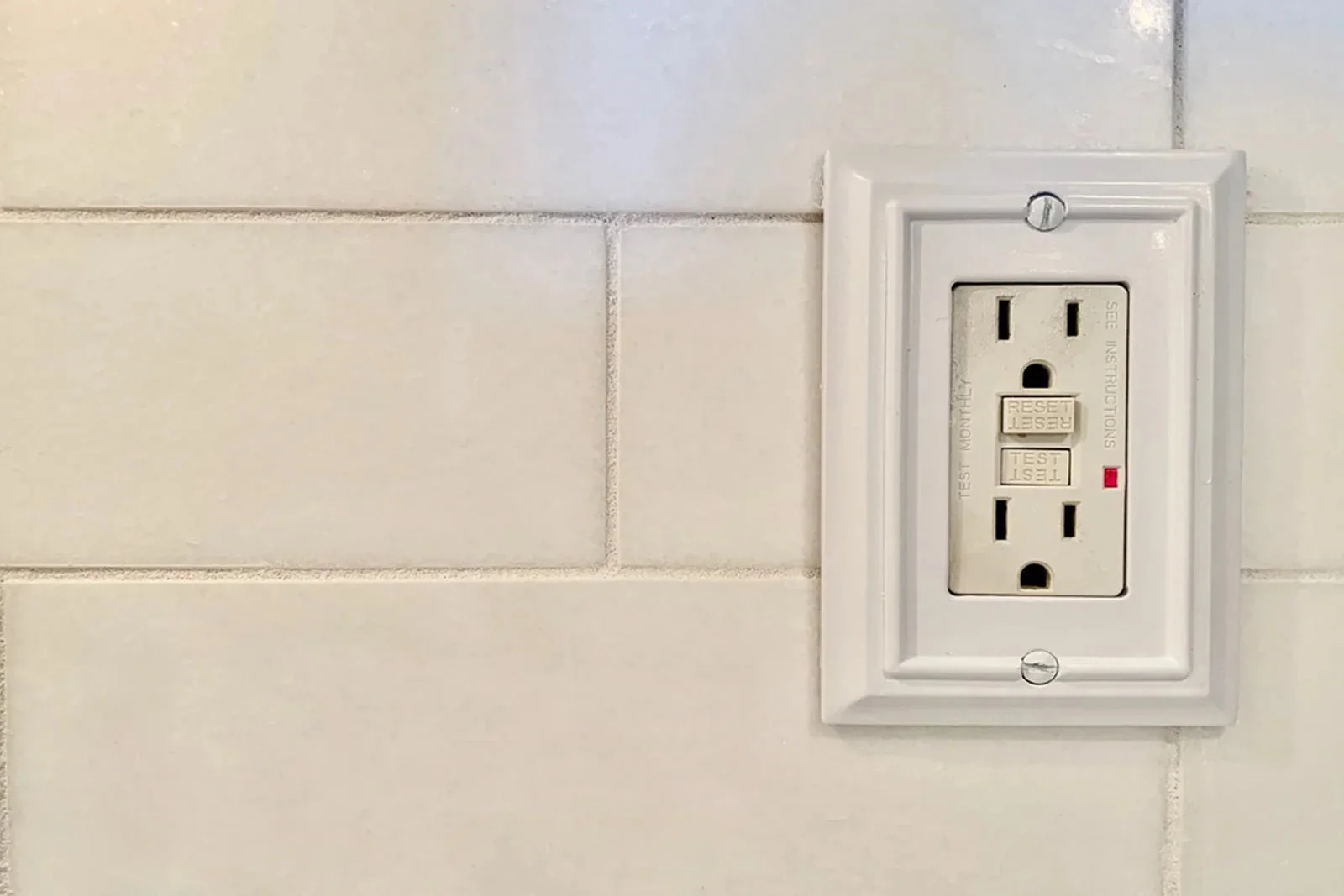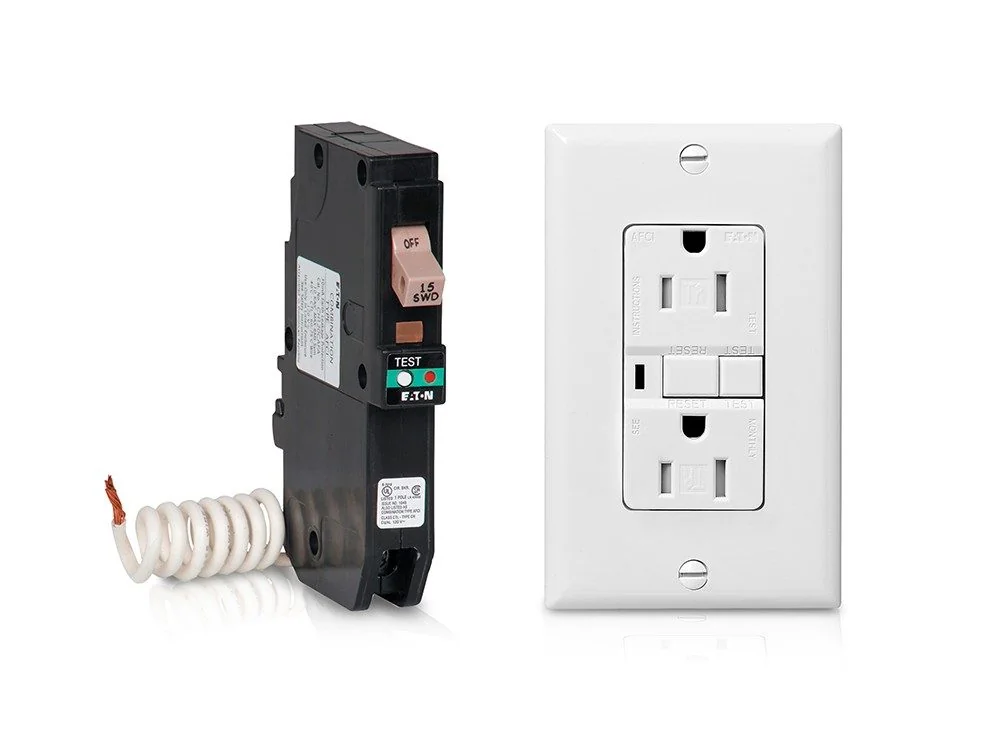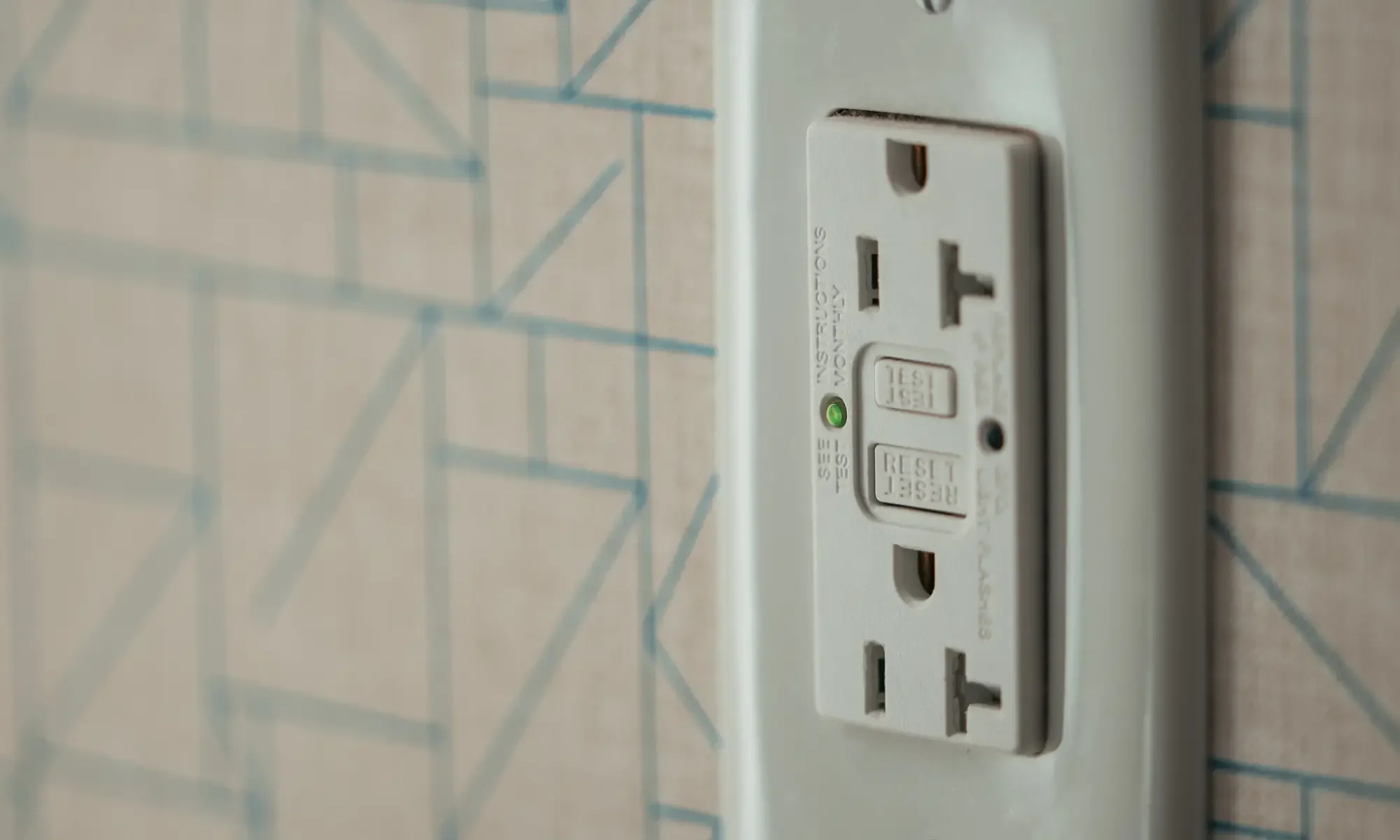Ground Fault Circuit Interrupters (GFCIs) are essential devices that protect people from electrical shocks and potential electrocution. By understanding the different types of GFCI outlets, you can make informed decisions about improving electrical safety in your home or workplace. This guide explores the various GFCI outlet options, their applications, and their features to help you choose the right protection.
What Are GFCI Outlets?

GFCI outlets shut off electrical power when they detect ground faults. In doing so, they help prevent electrocution, shocks, and burns. Unlike standard outlets, a GFCI “senses” the difference between the electricity flowing into the circuit and the amount returning. Even imbalances as small as 4 or 5 milliamps trigger the device. Within less than a tenth of a second, the circuit trips and cuts power.
Because GFCI outlets continuously monitor electrical current, they can immediately react to dangerous changes. As a result, these devices play a critical role in preventing serious injuries and saving lives.
There are three primary types of GFCIs. The most common is the receptacle-type GFCI, which looks like a regular wall outlet. Next, GFCI circuit breakers are installed in the main electrical panel and protect an entire circuit. Finally, portable GFCIs offer temporary safety and are often used in outdoor or construction settings.
GFCI Outlets Types
1. GFCI Receptacle Outlets
These are the outlets most homeowners recognize. GFCI receptacles look like regular duplex outlets but include TEST and RESET buttons. Because they are installed in standard outlet boxes, they are easy to add to homes or businesses.
Key Features:
Protect individual outlets
Quick installation
TEST and RESET buttons for monthly checks
Affordable solution for single locations
Available in USB-enabled designs
Applications:
Bathrooms and kitchens
Outdoor outlets
Garages and basements
Any location near water sources
GFCI receptacles can be wired in two ways: single-location protection (just that outlet) or multiple-location wiring (protects itself plus downstream outlets on the same circuit).
2. GFCI Circuit Breakers: Full Circuit Protection
Unlike receptacle outlets, GFCI circuit breakers sit in the main electrical panel. They protect the entire circuit and everything connected to it. Although these breakers cost more, they provide a convenient solution for large areas or when multiple outlets need protection.
Key Features:
Safeguards entire circuits
Installed at the electrical panel
Compatible with AFCI breakers for dual protection
Useful in new construction and renovations
Applications:
Garages or basements with several outlets
Outdoor circuits
Commercial or industrial spaces
Locations where multiple receptacles would be impractical
Cost Considerations:
Circuit breakers usually cost around $40–$50 each. In contrast, receptacles range from $7–$25. While breakers are more expensive upfront, they can save money if several outlets need coverage.
3. Portable GFCI Outlets for Temporary Protection
Portable GFCIs plug directly into standard outlets, adding protection without requiring installation. They are especially useful on job sites, in older homes, or for outdoor tools. However, they should never replace permanent GFCI outlets.
Key Features:
Plug-and-play convenience
No installation required
Works with different power tools and devices
Ideal for temporary applications
Applications:
Construction sites
Outdoor lawn equipment
Temporary electrical setups
RVs and camping
Homes without built-in GFCIs
Specialized Types of GFCI Outlets
In addition to the three main categories, several specialized outlets exist:
Weather-Resistant GFCI: Built with corrosion-resistant materials, marked with a “WR” label, and designed for outdoor durability.
Tamper-Resistant GFCI: Features shutters to protect children from inserting objects. Required in new residential buildings.
GFCI/Switch Combination: Combines an outlet and switch in one device, perfect for small spaces.
Self-Testing GFCI: Runs automatic checks and alerts users when replacement is necessary.
Audible Alert GFCI: Emits a sound when tripped, ideal for the vision-impaired.
Pilot Light GFCI: Provides a visual indicator, best suited for dim or hidden spaces.
GFCI vs. AFCI: Understanding the Difference

While both are essential safety devices, GFCIs and AFCIs serve different purposes. GFCIs prevent shocks; AFCIs avoid fires. Arc fault circuit interrupters (AFCI) protect people by inhibiting electrical fires. AFCI outlets and circuit breakers deactivate a circuit if they detect an arc fault.
Many modern electrical systems use combination AFCI/GFCI devices that provide both shock protection and fire prevention in a single unit.
Where Different Types of GFCI Outlets Are Required

Understanding where different types of GFCI outlets are required helps ensure compliance with electrical codes and maximum safety:
Bathrooms:All outlets require GFCI protection.
Kitchens:GFCI outlets must be within 6 feet of a sink, wet bar, or another water source.
Outdoor Areas:All outdoor outlets must have GFCI protection.
Garages:All 15- and 20-amp, 125-volt outlets in the garage must be GFCI outlets.
Basements:Unfinished basements require GFCI outlets.
Laundry Rooms:The 2005 revision of the National Electrical Code® requires all 15 and 20-amp, 125-volt outlets in laundry and utility rooms to have GFCIs.
Choosing Between GFCI Receptacles and Circuit Breakers
The choice between GFCI receptacles and circuit breakers depends on several factors:
Choose GFCI Receptacles When:
- Protecting individual outlets
- Working with existing electrical systems
- Budget is a primary concern
- Easy access for testing and resetting is important
Choose GFCI Circuit Breakers When:
- Protecting entire circuits
- Installing new electrical systems
- Multiple outlets need protection
- Space constraints prevent individual outlet installation
The main difference between GFCI circuit breakers and GFCI receptacle outlets is their location. GFCI circuit breakers are installed at the main breaker panel, while GFCI receptacle outlets are installed at individual outlets.
Installation and Maintenance Considerations
Proper installation and maintenance are crucial for GFCI effectiveness:
Installation Requirements:
- Professional installation is recommended for circuit breakers
- Proper line/load wiring is essential for receptacles
- Compliance with local electrical codes
- Appropriate outlet box sizing
Maintenance Guidelines:
GFCIs should be tested monthly to ensure they are in working condition. Whether you have a receptacle or circuit breaker GFCI, pushing the TEST button should turn off the power to the circuit. Temporary GFCIs should be tested before every use.
Common GFCI Outlet Issues and Troubleshooting
Understanding common GFCI issues helps maintain proper functionality:
Frequent Tripping: May indicate actual ground faults, moisture exposure, or worn devices.
Won’t Reset: Could signal device failure or wiring issues.
No Power: Check line/load wiring and circuit breaker status.
Test Button Doesn’t Work:Usually indicates device failure requiring replacement.
GFCI outlets usually expire after 15 to 25 years. Building codes require GFCI devices in moist areas of homes and businesses, where humidity can damage the outlet over time.
Future Trends in GFCI Technology
GFCI technology continues to evolve with smart home integration, improved sensitivity, and enhanced diagnostic capabilities. Modern GFCI outlets may include features like:
- Wi-Fi connectivity for remote monitoring
- Smartphone notifications for trips and failures
- Enhanced self-testing capabilities
- Integration with home automation systems
Frequently Asked Questions
Can I install a GFCI outlet myself?
A: Skilled DIYers may install one, but professional installation ensures safety and code compliance. An electrician should always do Breaker installation.
How often should I test GFCI outlets?
Test monthly. Press TEST to trip the outlet, then press RESET to restore power.
Why does my GFCI outlet keep tripping?
Causes include ground faults, moisture, faulty appliances, or a worn GFCI that needs replacement.
Do I need both GFCI outlets and breakers?
No. One type of protection per circuit is enough; use whichever best fits your setup.
How long do GFCI outlets last?
Most GFCIs last 15–25 years, but professionals advise replacing them within 10–15 years for safety.
Can GFCI outlets work without a ground wire?
Yes, they still work, but electricians must label ungrounded outlets according to code.
Conclusion
Understanding the different types of GFCI outlets is essential for maintaining electrical safety in any environment. From standard receptacles for individual protection to circuit breakers for comprehensive coverage, each type serves specific applications and requirements. Regular testing, proper installation, and timely replacement ensure these life-saving devices continue to provide the protection they’re designed for.
Take Action Today
Ensure your electrical safety by having qualified electricians assess your current GFCI protection and recommend appropriate upgrades. Regular testing and maintenance of existing GFCI outlets can help prevent electrical accidents and protect your family or employees from electrical hazards. Remember, electrical safety is not an area where shortcuts should be taken. Proper GFCI protection can save lives.
